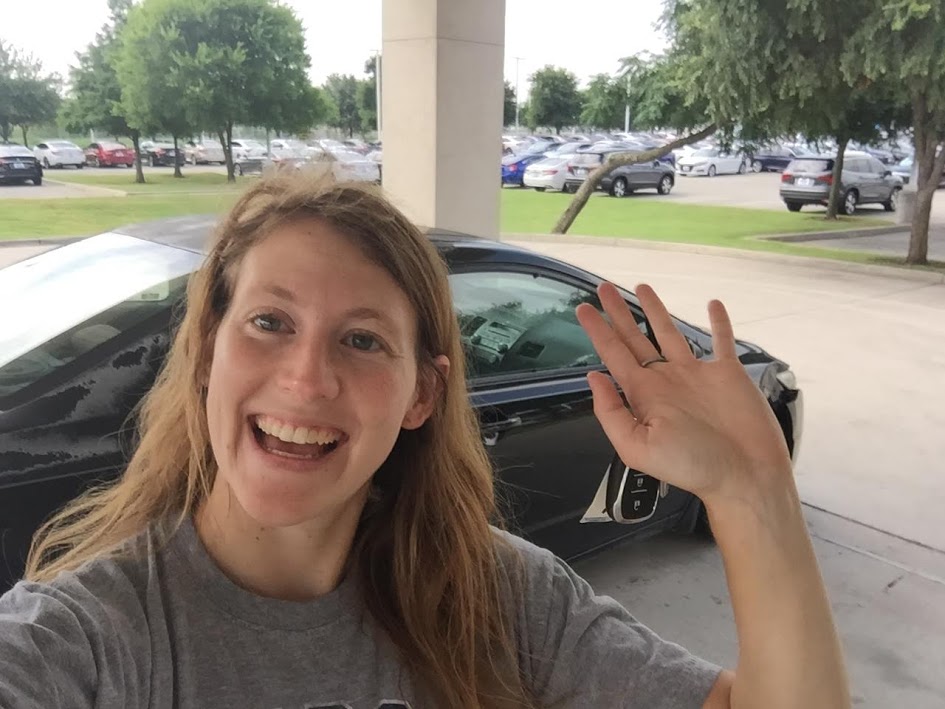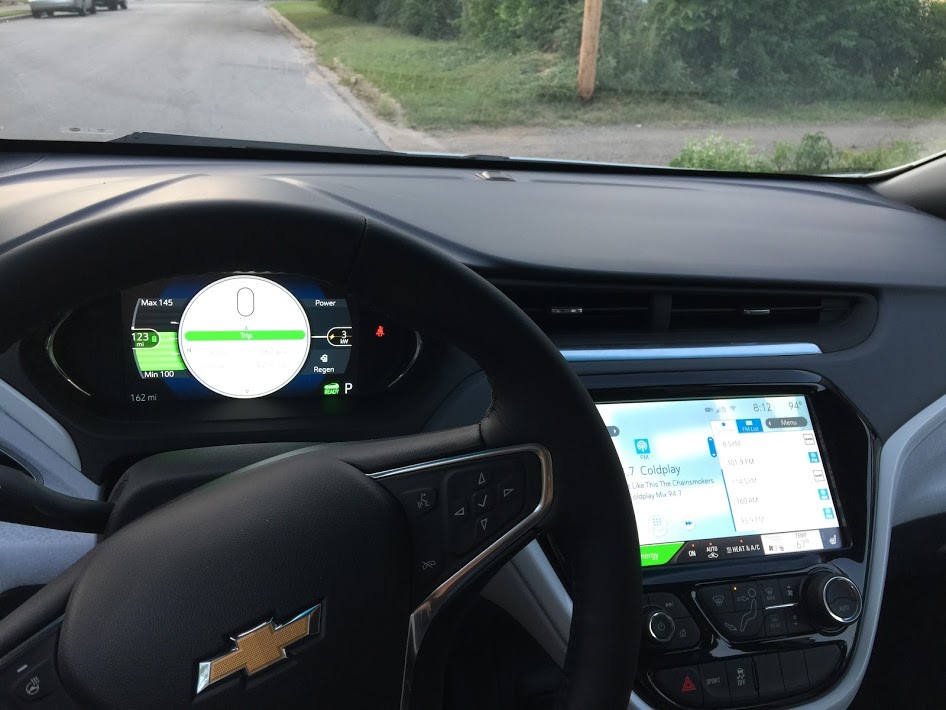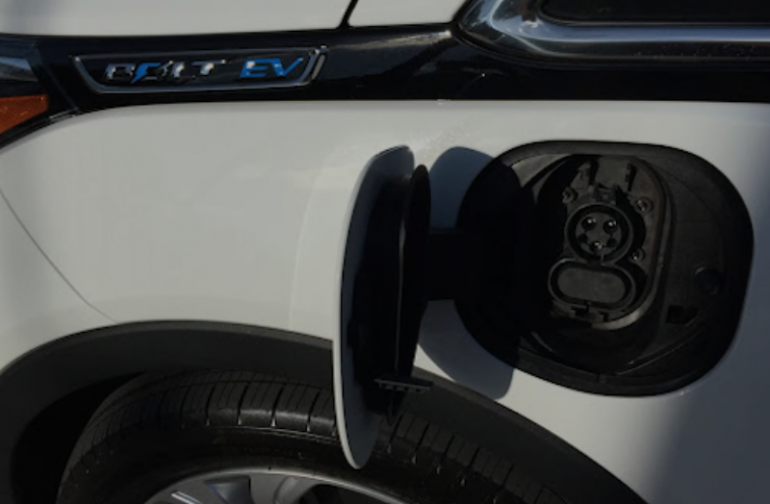I live in Austin, Texas, a relatively eco-friendly city with a tree hugging, hippy reputation. I work as an environmental reporter at the Austin EcoNetwork. And in my free time, I enjoy camping, hiking, and rock climbing.
In other words, I’m pretty much the stereotypical electric vehicle driver. But, when I went to the car dealership to try and buy my first electric car this past summer, I couldn’t get anybody to sell one to me.
Wait. Back up. What’s going on here?
As a city, Austin has poured plenty of public resources into encouraging the electrification of our transportation network. Our city’s electric utility, Austin Energy, to customers who install EV chargers at their home and manages over 650 public EV charging ports at libraries, grocery stores, and businesses around town. They have launched an aggressive public outreach campaign to encourage people to ditch their gas-powered cars and go electric.
And it’s not just the city of Austin that is making this push. The federal government is currently offering a and even the state of Texas is promoting a
All of this led me to believe that buying an electric car in this town would be fairly easy… Boy was I wrong.
This is my terrible, no good, very bad car buying story…for the 21st century.
After my dusty old Honda Civic that I’ve had since college finally crapped out on me over the summer, my partner and I did some research and decided that we wanted to buy either a or a . (Both are electric vehicles.) So we spent a Saturday in June car shopping at two local Nissan and Chevy dealerships.

The first dealership we went to only had one car for us to look at and the salesman who took us for a test drive admitted that he had never even been inside an electric vehicle before. This meant that he couldn’t really answer any of our questions and instead actively tried to get us to considered buying a gas-powered vehicle instead.
At first we thought this was just a fluke, but we soon learned (after spending eight hours car shopping at four different dealerships around town) that this is not an uncommon experience when buying an electric car in this city.
One salesperson swore to us up and down that the $10,000 in rebates and tax credits simply do not exist. Another Chevy dealership had no electric vehicles available at all. And at almost every place we went, employees tried to get us to buy pretty much anything other than an electric car.
Urghhh!!! Why can’t I just walk into a dealership and buy the car I want? And if it’s so difficult for me (a person who is heavily invested in making an environmentally-friendly purchase), what are the chances that a casual car buyer will make the switch to electric? What is going on here?
After many, many hours of of shopping (and still with no car), that’s the question I sought to answer.
“Your experience unfortunately is very common.”
That’s the response I got from Karl Popham, the manager of Austin Energy’s Electric Vehicles and Emerging Technologies program. I sat down with him (and many other local experts) throughout the summer to share my woes about my car-buying adventure… and to pick their brains about why this is happening.
1. The Problem – Lower Sales Commissions
Popham said that one of the big reasons why salespeople seem to be actively encouraging customers not to go electric is their commissions. He said that he’s been told the average commission for an EV is $300 versus $900 for a traditional gas-powered vehicle.
Wait. Can that really be true? I was skeptical, so I started looking for a real-life Chevy salesperson I could talk to… and got connected to this man – Buzz Smith, a self-proclaimed EVangelist and a salesperson at Classic Chevrolet in the DFW area.
He laid out the numbers for me. “I’ve had Bolts and Volts that I’ve sold that I’ve made $250. Well, I sell around 110 cars a year. Well that’s $27,000 a year if all I sold were plug-in vehicles, so I have to sell everything that Chevy makes in order to make a living.”
But his heart is in electric vehicles. Buzz bought his first Chevy Volt (a plug-in hybrid) in 2012 from Classic Chevrolet, fell in love with the car, and became such an enthusiast that he managed to convince the dealership to hire him to specialize in selling plug-in vehicles.
Since then, Buzz has launched his own blog and has become a true evangelist for electric vehicles, speaking at events throughout Texas.
Equal parts charming salesperson and nerdy EV lover, Buzz says that after buying the Volt, “For the very first time in my life, I read the owners manual cover to cover.”
In the eyes of the dealership (which had very little knowledge of these new plug-in vehicles), this made Buzz an expert.
As both a dealership employee and an EVangelist, Buzz also has a deep understanding and sympathy for the constant push and pull between environmentalists cheering for an EV revolution and traditional car salesman that are just trying to survive.
“In your job, if you could do a task that took very little effort, but paid very highly, versus a task that was very difficult but paid very little, which would YOU choose to do?,” writes Buzz on his blog.
The fix – Austin Energy has a pilot program currently under development that would close this sales commission gap. They’re calling it the SPIF program and if it comes to fruition, it would give $300 to $450 (to be split between the sales manager and the sales staff) for every EV sold in Austin.
A quick status update on the SPIF program – It has an official Austin Energy staff member who has been designated to lead the project and focus groups with dealerships and sales people have already been held. Now it’s just a matter of taking it through the proper channels and getting it approved (things at the city sometimes can take a while).
2. It takes a long time to sell an electric vehicle
Not only do salespeople earn less for every electric vehicle they sell, but it also often takes them way longer to close an electric vehicle sale. For a first-time electric vehicle buyer, Buzz says that it’s not uncommon for them to come into the dealership three or four times before actually making a purchase because they have so many questions.
This is pretty different from a gas-powered vehicle sale, where the big questions people tend to ask are ‘what color is it?’ and ‘does it have leather seats?’.
For this reason, Buzz calls electric vehicles a “learning sale,” equating it to his days as a manager at an Apple store.
“Moving somebody from gasoline to electricity is just like moving somebody from Windows to Mac OS,” Buzz says. “There’s a lot of fear; it’s a big investment…”
The fix – To help ease the burden on sale staff, Buzz pitched an interesting idea to his boss. Why don’t we create a little plug-in education center (modeled off an Apple store) with helpful information playing on TVs and iPads? That way, sales staff can juggle multiple customers at once. Plus, customers can get their questions answered even if a qualified staff member is out giving a test drive, with another customer, etc.
This is exactly what they’ve done at Classic Chevrolet.

But in Buzz’s dream world, the dealerships would take things even one step further and approach electric vehicle sales from a team approach. His idea is for dealerships to pay all the salespeople in the “electric vehicle department” a base salary and then award bonuses based on team performance. This would help make up for the fact that electric car buyers don’t often buy anything the first time they visit a dealership.
In most dealerships, the idea of decreasing their reliance on commissions is still a radical concept that will take some time getting used to. After pitching it to his own boss, Buzz said, “It was such an alien thing to him. Why would I want to limit how much money somebody could make?”.
For now, Buzz is still pushing the issue, explaining that at least until EVs become more widespread, the industry might need to change in order to accommodate them.
3. High turnover amongst sales staff/ lack of EV knowledge amongst sales staff
The trouble on the education side of things, explained Popham, is that the turnover rate at car dealerships seems to be so high that the effect of education programs is not necessarily long lasting.
“And so when you get someone in, and they might have worked at another dealer, and they know gas cars,” Popham said. “They don’t know, and they don’t have time, and they’re actually given a disincentive to know.”
The fix – Remember that SPIF program I just told you about? Popham says that managers and salespeople will not be eligible for the money without taking a short class first, so they’re knowledgeable about EVs.
4. EVs require less maintenance… and dealerships hate that
This is actually one of the big reasons why I wanted an electric vehicle in the first place. With my old Honda Civic, it seemed like every few months, I was pouring more money into the car, paying to repair or replace a bunch of parts I had never even heard of before.
With electric vehicles, maintenance costs tend to be lower, simply because they have far less moving parts. According to Popham,the average gas-powered vehicle has about 2,000 parts, while an EV has less than 30.
And since car dealerships rely on routine maintenance as an important part of their revenue stream, electric vehicles can seem really scary. Popham compared the current car dealership model to what we see in the movie industry.
“It’s almost like the movie theater model, where the movie theater doesn’t make money on the tickets. (That goes back to the people who make the movies),” Popham said. “They make money on concessions.”
5. No electric trucks… and Texans love trucks.
This one might sound a little trivial, but the truth is, people buy cars for all sorts of reasons and until there is more variety in the types of electric vehicles out there, it’s hard to imagine them becoming completely mainstream.
When I went to the local Chevy and Nissan dealerships and said that I wanted an electric car, I really only had one or two options to look at. If I wanted a gas-powered car, I could’ve wandered the lot for hours checking out different models, colors, features, etc.
The fix – According to those closely following the industry, this is changing. that they plan on releasing eight plug-in hybrid models (including the Jeep Wrangler) in the North American market by 2021. Porsche says they’ll begin production on an electric vehicle in 2019. Volkswagon is releasing an electric version of it iconic minibus in 2022.
And yes, that they’ll be releasing an electric version of their F-150 pickup and Mustang sports car by 2020.
6. Supply
When I was car shopping, I went to four dealerships and was only able to test drive two cars because there were so few electric vehicles on the lot. When I spoke to Buzz in July he told me that there were only 10 Chevy Bolts within 250 miles of him. He also predicted that it would continue to be difficult to get your hands on one for at least the next six months.
Why?
In part, Buzz believes that it’s just a perceived lack of demand. “They think they just won’t sell well in Texas,” Buzz said when I spoke to him over the summer. “I think GM has been surprised at the sales of electric vehicles in Texas.”
He also pointed to the fact that GM doesn’t really advertise its plug-in vehicles. “In the Volt and Bolt world, we’re all crying ourselves to sleep that GM is not advertising these amazing cars,” Buzz said. “But I think GM is trying to hold back on the success a little while longer and keep making money the traditional way with pickups, SUVs, Corvettes.”
Of course, as we’ve mentioned, there’s also been some reluctance from the dealers themselves. Buzz says that in order to start selling the Chevy Bolt, GM requires dealerships to install a DC fast charger onsite, which costs about $17,000.
Plus, the way GM allocates cars, if you’re a dealership that sells a lot of plug-in vehicles, GM sends you a decent amount of plug-ins. However, if you hardly sell any, GM will hardly send you any, which means that customers might be out of luck if their neighborhood dealership is not interested in selling electric vehicles.
And last, but certainly not least, there’s the issue of regulations.
The (or ZEV for short) program is a California regulation that has since been adopted by nine other states (Connecticut, Maine, Maryland, Massachusetts, New Jersey, New York, Oregon, Rhode Island, and Vermont). Essentially, it requires automakers that sell cars in these states to sell a certain percentage of electric vehicles. Not surprisingly, this means that car manufacturers tend to send a lot of their electric vehicles to those states (and not to Texas).
So what to make of us all this? And most importantly, what car did I end up buying?
In the end, we went with the Chevy Bolt, but the only one we could find in Austin was a deluxe version that was out of our price range. After dozens of phone calls, I finally found one in San Antonio (at a dealership with a non commissioned sales staff). I am now proud to say that I am a very happy electric car owner, but this entire experience has allowed me to see into a whole new world that I never even knew existed.

That’s why I’ll be publishing a series of blogs over the next few weeks all about electric vehicles in Austin, as well as sharing some tips I’ve learned about making the switch to EV.
So stay tuned!



Leave a Reply Cancel reply
You must be logged in to post a comment.